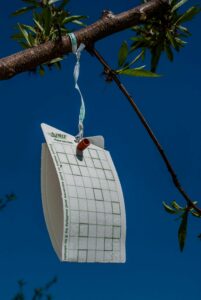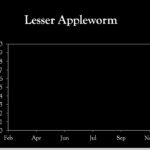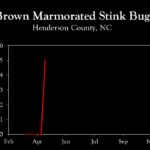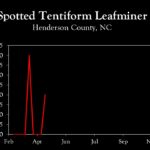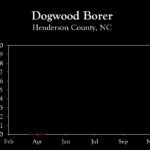WNC Orchard Insect Pest Populations – May 4, 2021
go.ncsu.edu/readext?794487
en Español / em Português
El inglés es el idioma de control de esta página. En la medida en que haya algún conflicto entre la traducción al inglés y la traducción, el inglés prevalece.
Al hacer clic en el enlace de traducción se activa un servicio de traducción gratuito para convertir la página al español. Al igual que con cualquier traducción por Internet, la conversión no es sensible al contexto y puede que no traduzca el texto en su significado original. NC State Extension no garantiza la exactitud del texto traducido. Por favor, tenga en cuenta que algunas aplicaciones y/o servicios pueden no funcionar como se espera cuando se traducen.
Português
Inglês é o idioma de controle desta página. Na medida que haja algum conflito entre o texto original em Inglês e a tradução, o Inglês prevalece.
Ao clicar no link de tradução, um serviço gratuito de tradução será ativado para converter a página para o Português. Como em qualquer tradução pela internet, a conversão não é sensivel ao contexto e pode não ocorrer a tradução para o significado orginal. O serviço de Extensão da Carolina do Norte (NC State Extension) não garante a exatidão do texto traduzido. Por favor, observe que algumas funções ou serviços podem não funcionar como esperado após a tradução.
English
English is the controlling language of this page. To the extent there is any conflict between the English text and the translation, English controls.
Clicking on the translation link activates a free translation service to convert the page to Spanish. As with any Internet translation, the conversion is not context-sensitive and may not translate the text to its original meaning. NC State Extension does not guarantee the accuracy of the translated text. Please note that some applications and/or services may not function as expected when translated.
Collapse ▲With the uncertainty of fruit loads and extended bloom period, many growers are just now applying a petal fall spray. Recommendations for petal fall were outlined in the April 15 update, with an emphasis on control of plum curculio.
Codling Moth: In lower elevation orchards such as Lincoln and Cleveland Counties, codling moth degree-day accumulations have increased to 300, while in Henderson County they are only about 180 DD. First egg hatch begins at about 250 in orchards with moderate to high populations. However, in orchards with low populations, which includes most commercial orchards, initial applications can be made at about 350 DD. In Henderson County, 250 and 350 DD are predicted to occur on May 9 and 15, respectively. In Lincoln county 350 DD is predicted for later this week.
San Jose Scale: Another insect on the radar at this time is San Jose scale. Targeting first generation crawlers at first or second cover has become a popular strategy in recent years, and has worked well for those employing this tactic. Two commonly used and excellent materials are Esteem and Centaur, and for resistance management it would good to alternate these materials yearly. Also, studies last year showed that Assail at 6 oz/A also provided good control of a large SJS population.
The reason for the recommended timing of applications at 1st or 2nd cover is illustrated in the figure below that shows population trends of a large SJS population in apples in 2015. Crawlers began to emerge in mid-May, which is the optimum timing of applications in Henderson County. In lower elevations (Cleveland County), applications this week or next would be ideal.

Learn more about southeastern apple insect pests at the Apple Insect Management page.
2021 Average Weekly Trap Captures
| HENDERSON COUNTY | |||
| Insects per trap | |||
| Apr 19 | Apr 26 | May 3 | |
| Codling moth | 7.5 | 5.5 | 15.5 |
| Oriental fruit moth | 20.0 | 4.0 | 11.5 |
| Tufted apple bud moth | 0.0 | 0.0 | 5.0 |
| Redbanded leafroller | 14.0 | 12.0 | 4.0 |
| Obliquebanded leafroller | – | – | 0.0 |
| Lesser appleworm | – | – | 0.0 |
| Apple maggot (abandoned and research orchards) | – | – | – |
| Brown marmorated stink bug (commercial) | – | – | – |
| Brown marmorated stink bug (unsprayed) | 0.0 | 0.0 | 0.5 |
| Spotted tentiform leafminer | 0.0 | 0.0 | 2.0 |
| Dogwood borer | 0.0 | 0.0 | 0.0 |
| Peachtree borer | 0.0 | 0.0 | 0.0 |
| Lesser peachtree borer | 3.0 | 4.0 | 42.0 |
| San Jose scale | 0.0 | 0.0 | 0.0 |
*Note that these averages illustrate only the timing of insect emergence and fluctuations in populations, and are not representative of population levels in any given orchard. The only way to have an accurate assessment of an individual orchard’s populations is to set up traps in that orchard.
2021 Accumulated Degree Days
| HENDERSON COUNTY | ||||
| Apr 19 | Apr 26 | May 3 | ||
| Codling moth (Biofix: April 10) |
67 | 86 | 177 | |
| Oriental fruit moth (Biofix: March 27) |
216 | 251 | 372 | |
| Tufted apple bud moth (Biofix has not been established) |
– | – | – | |
2021 Pest Trends (click to enlarge)
Visit WNC Orchard Insect Populations for archived posts.
Additional Resources
- Apple Insect Management Overview
- How to Monitor Apple Insect Pests (IPM)
- Brown Marmorated Stink Bug in North Carolina
- Integrated Orchard Management Guide for Commercial Apples in the Southeast
- Walgenbach Entomology Lab



